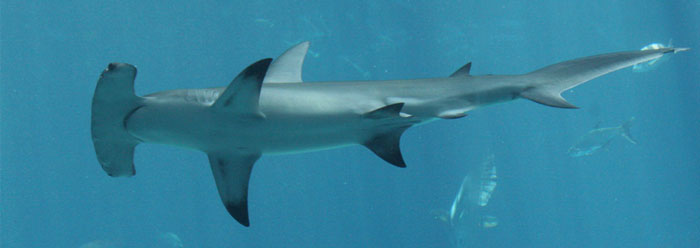In the late 1800s, a Darwinian concept called "transmutation of species" revolutionized historical biology. Instead of viewing animal species as the products of special creation, Darwinists believed that they resulted from a long, repetitive transformation through various "natural" or environmental pressures. But recent studies show that the real changes happening in animals fly in the face of these old concepts.
For instance, hammerhead sharks supposedly came about when an ancestral shark developed a slightly wider head and then produced descendants with "cephalofoils"1--the flat "hammer" portion of the shark's head--of gradually increasing sizes. But this story was hammered down by a 1993 mitochondrial DNA comparison showing strong evidence that the first hammerheads actually had the widest foils. Although this did not fit classical ideas of iterative evolution, experts continue to make statements like, "The ancestor of all hammerhead sharks probably appeared abruptly."2
Recently, a hammerhead shark study published in Molecular Phylogenetics and Evolution analyzed eight species from around the world, comparing certain differences in their DNA sequences. In context, the researchers noted a range in widths among hammerhead shark cephalofoils,2 from that of a winghead shark, which has a cephalofoil half the length of its entire body, to the bonnethead shark, which has eyes perched on little more than knobs on either side of its head.
The researchers concluded that small hammerhead sharks developed from larger-bodied ancestors. Also, DNA patterns revealed that cephalofoil sizes changed independently several times after sharks had settled into otherwise stable populations. The study's senior author, Andrew Martin of the University of Colorado, said in a press release, "Hammerheads are special fish, and there is nothing that remotely resembles them anywhere on the planet."2
That statement would make perfect sense if hammerheads were created on the fifth day of the creation week. Then they certainly would be "special fish" that "appeared abruptly."
And unlike unobservable "transmutation" between species, researchers can and do observe what features do and do not change. While certain of its features appear to have undergone adjustments, the overall hammerhead shark body plan has remained stable.
Shark research has noted the balance of advantages and disadvantages of cephalofoil size. The variations expressed seem well-designed to have enabled the descendants of the first hammerheads to adapt and "fit" into various marine environments. The cephalofoils provide "lift" to large hammerheads as they swim, operating almost like the wing of an airplane. Also, since the head is equipped with microscopic electronic field sensors to detect prey hidden under seafloor sediment, the wider the cephalofoil, the more accurately the shark can triangulate its dinner. Plus, its "nares," which are like nostrils, are positioned at either end of its head so that a wider cephalofoil allows the shark to track scents more efficiently, as well as make sharper maneuvers.
Yet no matter which of these factors is adjusted by a change in cephalofoil size between generations, "there seems to be an inverse relationship between the size of the hammer [cephalofoil] and the pectoral fins, resulting in a fairly constant total surface area of these planing surfaces."3 This coordinated development scheme clearly shows that variations in hammer size result from a pre-planned algorithm, and not from random mutations or any known natural law.
The fully fitted features of an adult hammerhead shark are so well-constructed that they draw attention to the genius of their Creator. Also, the well-orchestrated capacity to express variations in body and "hammer" length--but in very few other hammerhead traits--draws even more attention to the One "who created heaven, and the things that therein are, and the earth, and the things that therein are, and the sea, and the things which are therein."4
References
- The word "cephalofoils" comes from the Greek words meaning "head" and "wing."
- New Hammerhead Study Shows Cascade of Evolution Affected Size, Head Shape. University of Colorado at Boulder press release, May 18, 2010, reporting on research published in Lim, D. D. et al. 2010. Phylogeny of hammerhead sharks (Family Sphyrnidae) inferred from mitochondrial and nuclear genes. Molecular Phylogenetics and Evolution. 55 (2): 572-579.
- Martin, R. A. Recent Changes in Hammerhead Taxonomy. ReefQuest Center for Shark Research. Posted on elasmo-research.org February 24, 1998, accessed June 9, 2010.
- Revelation 10:6.
* Mr. Thomas is Science Writer at the Institute for Creation Research.
Article posted on June 15, 2010.




















